How to Make a Subway Map with John Tauranac
Hear from an author and map designer who has been creating maps of the NYC subway, officially and unofficially, for over forty years!


Not many people see New York City with the intensity that Maureen Seaberg experiences it every day. Most humans of the world are trichomats, boring normals, who have a mere three cones for color perception: red, blue, and green. Trichomats see roughly a million colors. But Seaberg is what scientists call a tetrachromat, that is she has a fourth yellow cone in her retinas that creates exponentially greater color perception. Those with this rare genetic gift see as many as 100 million colors. It is because of this gift that a fifty-year-old Staten Island journalist with bubble gum pink lips and huge light-blue peepers is the inspiration of Liptensity, a red-hot new make-up line of unusually-hued colored lipsticks for MAC cosmetics.
For the past month, the Liptensity line Seaberg has inspired and helped perfect colors for has received glowing reviews in beauty magazines and blogs around the world. Giant signs for the recent launch have filled MAC stores and even a full window of the flagship Macy’s, and were on the lips of models at major fashion shows this season. The world-wide product rollout for Liptensity will complete this week with impressive global distribution – 4 million units at 2500 points of sale in 110 countries. “It’s like a New York fairytale,” Seaberg exclaims as we walk through Central Park at ten in the morning in late September, as she took the Untapped Cities team around.

Seaberg walking us through Central Park
Her Central Park is teeming with a dumbfounding amount of greens. Dressed in all-black, she gestured at a nearby tree. “You can see the start of fall in the leaves already. Some are more Kelly, others pine green.” She points to water lilies at the base of the pond, where the ducks are floating by. “See how that green is so much brighter than the green of the trees? In Ireland they say forty shades of green, but there has to be 4000 or more greens in Central Park.”
Before you cry baloney, Seaberg’s extraordinary claims are solidly based in science, and Dr. Jay Neitz of the University of Washington in Seattle, the leading scholar in the field of tetrachromatcy, genetically tested Seaberg himself. But how did she meet him? And how did that lead to a beauty consultancy contract with MAC? The story behind the story is seldom heard. But we were also interested in how this fellow native New Yorker saw the city differently.
Seaberg spoke in a crystal clear broadcast-ready voice one masters as a communications major at Penn State.
“I stumbled on a Radiolab podcast and interviewed an amazing interior designer from Pittsburgh named Susan. She said she sees tones on a sky on a clear day that aren’t light blue – that might be pink or red – and she described her lifelong outrageous enthusiasm for color. As I listened I got chills: this was my story too! I always thought that part of my experience with color might be due to synesthesia as I am a synesthete, a person who has mental color associations with letters and numbers. I experience color letters, colored numbers, even colored music. So I’ve been involuntarily surrounded by color my entire life. Someone even made a short documentary on my synesthesia. But could I be a tetrachromat too? Could this be connected to my synesthesia? Also featured on that broadcast was the go-to pro, Dr. Jay Neitz, and I worked up my courage to give him a call.”
“Jay was very friendly and asked me all sorts of questions about my behavior and family history, and was curious if any of the men in my immediate family were colorblind. It struck me as peculiar at the time; I thought, aren’t we talking about enhanced vision, and shouldn’t that be common in a family if it is genetic? And then when I revealed my only brother is colorblind, Jay said, ‘That’s it! I’m sending a spit kit!’ So this DNA kit for saliva arrived in the mail a few days later. And I woke up first thing in morning, and as directed, drank no water, no first cigarette of morning, and I filled it and sent it off. It was a very long six weeks for me, waiting for the results, because I was very curious if my love of color and my polite disagreements throughout life about what specific colors are in play was genetically based. Lo and behold six weeks later I get an email from him.”
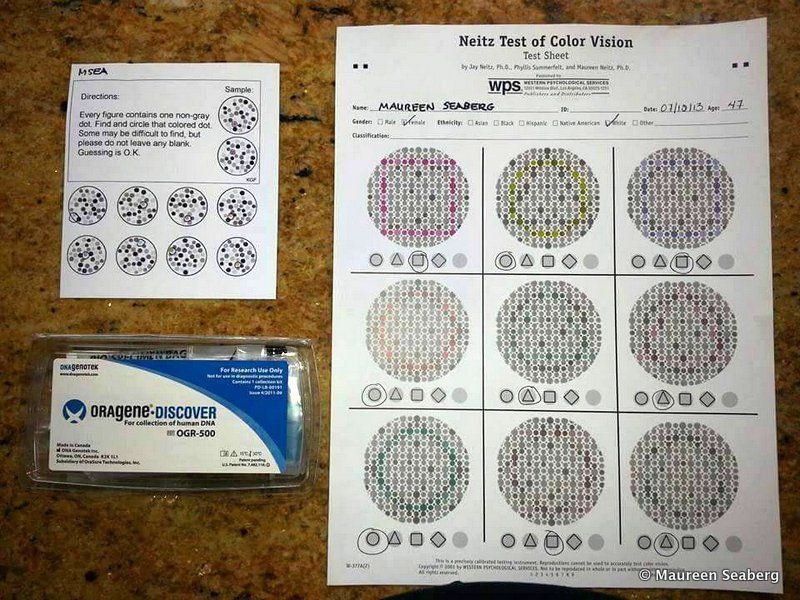
Seaberg’s actual test, photo courtesy of Maureen Seaberg
Seaberg brings up the late 2013 exchange on her phone and I take a screenshot with mine:
We completed the analysis of your red and green photopigment genes in our laboratory. On your X-chromosone, we identified the genetic basis for three types of cone photoreceptors absorbing in the middle-to-long wavelength region of the spectrum. These together with your blue cone photopigment gene indicate that you have the genetic basis for four types of cone receptors.”
Tetrachromacy, Seaberg tells me, is not as uncommon as you would think. As many as 12 percent of women carry the gene, but after talking with scientists for her Psychology Today column, she doesn’t think it is flipped on in everyone. “Now there are many studies going on where they are try to prove functionality. I’m involved in some of the studies. But I think what is happening is that in some women, they are recognizing themselves in the first initial reports of the new find.”
As a science journalist, with her natural interest in the topic, she has become something of an expert herself. “Tetrachromats are always women because you need two x chromosomes for it to manifest. The first tetrachromat was not discovered until 2009, in Great Britain by Gabriel Jordan, a researcher there. It is all very new. But I personally know three women who have recognized themselves and sought genetic testing and then tested positive. So having the behaviors can lead to discovery. So perhaps the women in that twelve percent who carry the gene who are not responding to the reports, don’t have the behaviors and that’s why they don’t seek info like I do.” She pauses to point out a park rat racing near our feet. “I’d call him gun-metal.”
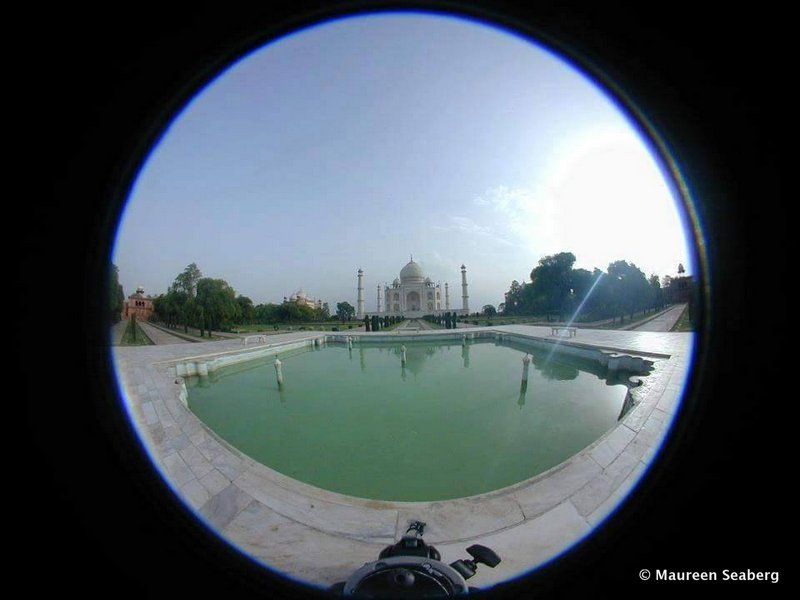
The Taj Mahal, photographed by Seaberg. “They don’t tell you its translucent,” she tells Untapped Cities
Are her great blue eyes a genetic marker for this ability? “No. Of the four tetrachromats women I’m aware of, yes, we seem to have outsized eyes, but the colors vary. There’s green-eyed and there’s brown-eyed tetrachromats.”
Seaberg mulled over what to do with the genetic confirmation. Was that all there was to a fire? Supersmellers aid the perfume industry. Supertasters are employed in the coffee and chocolate trades. So what could a superseer offer companies with this skill? She journaled ideas. She especially loved MAC cosmetics, so why not tell them? “MAC are master storytellers. They don’t talk down to consumers, they are always edgy and finding new ideas – they are like anthropologists. Everything from special troll dolls as incentives to celebrity spokespeople like signing the first drag queen RuPaul and to offering Lady Gaga her own line called Viva Glam, they go to great lengths to engage their fanbase. I thought they would like that my experiences were a little different and fresh, and they certainly are color experts, and they are also very much champions of diversity. So I thought – the diversity people who are color authorities would certainly get the neurodiversity of having this sort of thing.”
All she lacked was an in. So, with cockeyed optimism, she reached out to MAC’s Creative Director, James Gager, to say how much she admired him. “I said I was a journalist, and that I had recently found out that I had the genetic gift, and that I would love to apply it to cosmetics some day. There’s a really funny quote I read [that] he said before I contacted him: ‘Everyone we collaborate with is like a strange aunt or uncle coming home.’ I remember thinking I hope I’m strange enough.”
To her shock, one of Gager’s assistants contacted Seaberg the next day. “And we started having meetings!”
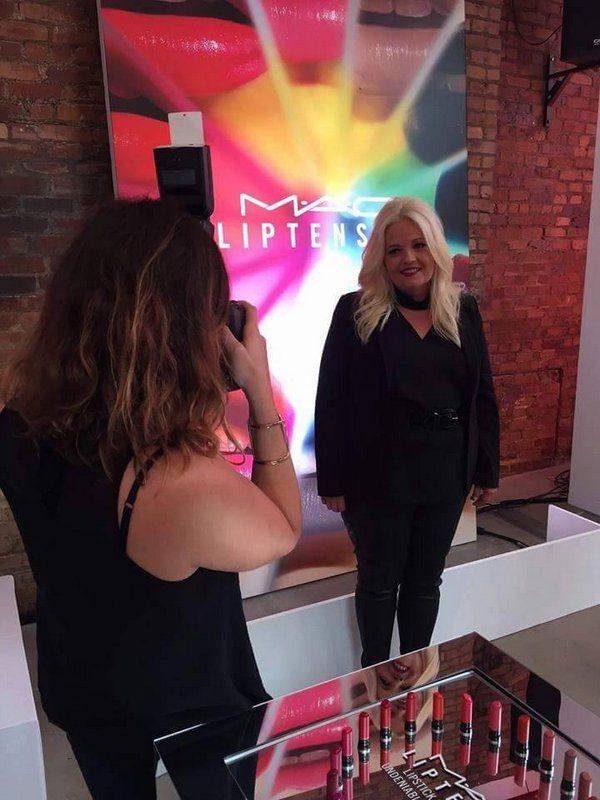
Launch of Liptensity. Photo courtesy Maureen Seaberg.
Seaberg initially worked from a swanky sky-lit penthouse on Prince Street owned by the corporation. “The natural light in that room is perfect for what they do. And they brought in prototypes. They had twenty-four prototypes to begin with because internally they have consultants who are very good at spotting trends and this was to be for Fall 2016. So in all honesty, I had something to work with, but then I was invited to the laboratory and we sat and for a few days and swatched ourselves on our arms, and then we put the prototypes on our lips to test. We put four of the same shade on our inner forearms. You roll your arm out back and forth and you look at it very carefully under the lighting, then by the window, and then outdoors.”
“You’d be surprised how much subtlety is there when you really focus on color. There was a Bordeaux-like prototype that later turned out to be the new color Marsala – it had a little too much orange in it and I was used to clean up the muddiness of it. I was used to center these colors, so that when we say something is gumball, it is the pink of gumball. I worked to make shades free of any yellow undertones, some without too much white. And that is what I was what I was working on.” Some might say the classic New York City color is a stylish black like she was wearing. But Seaberg warns there are different shades of black. “It’s so hard to get colorless black. I worked on a true black shade called Stallion that gave us a headache to perfect. In sunlight, I kept spotting a green undercast.” The shade she is proudest of is Galaxy, her gray-lavender. “I’ve never seen a shade like that.”
Ugly colors of New York offend Seaberg’s eye. “There’s a lot of soot in New York, so you might have an exquisite façade but with an unappealing gray cast. Now the blue of police cars, that medium blue is actually really lovely. You may not notice when they are speeding by, but I was looking at one parked recently and I thought whoever chose that shade, good job!” To Seaberg, even the city’s brownstones are multicolored. “Brown does not do it justice. There are a few things going on in that brown, I wouldn’t call it plain brown. And speaking of New York colors, the Brooklyn Bridge is gorgeous variegated masonry too, not just gray.”
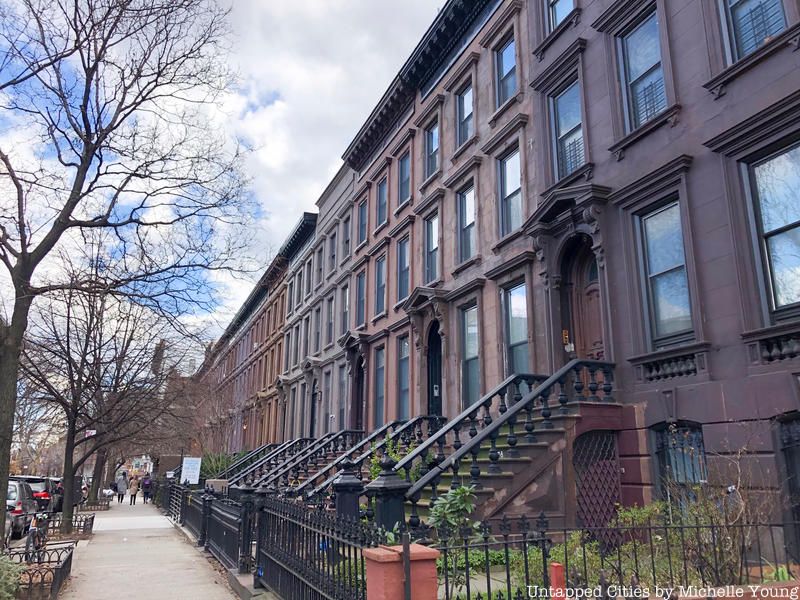
“Also in addition to the verdigris of the Statue of Liberty, I love the champagne glow just as the lights come up on the skyscrapers at dusk. And cement? And asphalt? You know that lyric from Les Miserables? ‘In the rain, the pavement shines like silver…’ That really speaks to me because one of the internal monologues I have whenever walking the city is “look at THAT gray – or THAT one…” It’s completely varied depending on the vintage of the pour and wear and tear.”

Seaberg admits that she doesn’t see the variety in manufactured goods as she does in the natural world. “There was recently a sunset in New York where the pink so pink and champagne but never blended to peach. Existed simultaneously. I started to name this colors so I have a record of what I think doesn’t show up. For me, the invisible colors are in nature. Just look around us. When a gray pigeon has an iridescent shade to his head I really notice it.”
We stretch and climb on top of one of Central Park’s enormous granite rocks peeking out from the soil, visible reminders of the bedrock below the city up to a billion years old. “If you look very closely at granite there is a pointillism to be found, it’s spotty and the closer you get the more colors it has.”
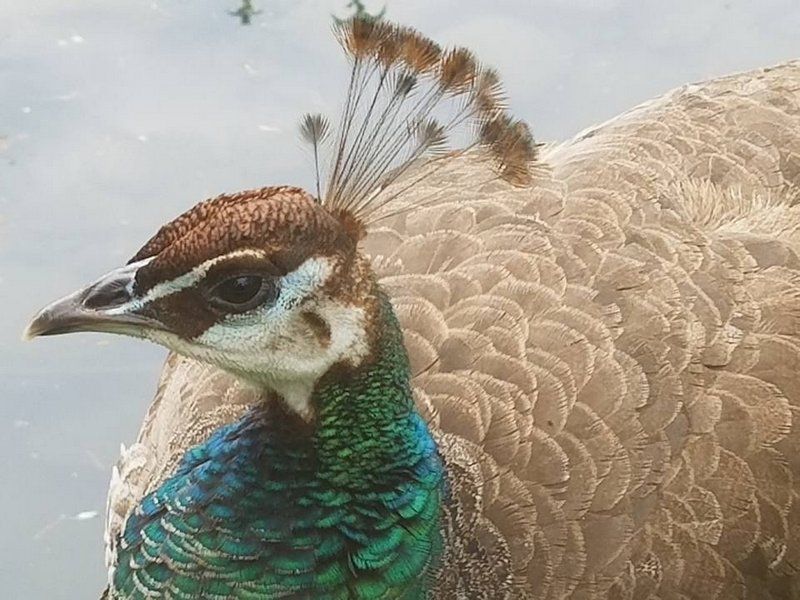
Photo by Maureen Seaberg
The experience in the MAC lab has brought on a new awareness of color skill for Seaberg. Recently she went on a trip to the Bronx Zoo to see the baby gorillas, but alas they weren’t out. She found herself headed towards the peacocks, and their exquisite trippy teal. She had a great time photographing them, then journaling what she saw for future colorwork.
So what next? Seaberg dreams of another round of color naming for MAC, and the strong initial interest and brisk sales of the line is giving her hope they will ask. Another quiet dream of hers is to pick colors for a Tesla. “I’d suggest abalone, the inside of an abalone shell black pearl, but with a Tesla you would notice that iridescence on the street.”
It doesn’t take a tetrachromat to know that to achieve your New York dreams, you have to put it out there. Anyone know Elon Musk?
Subscribe to our newsletter